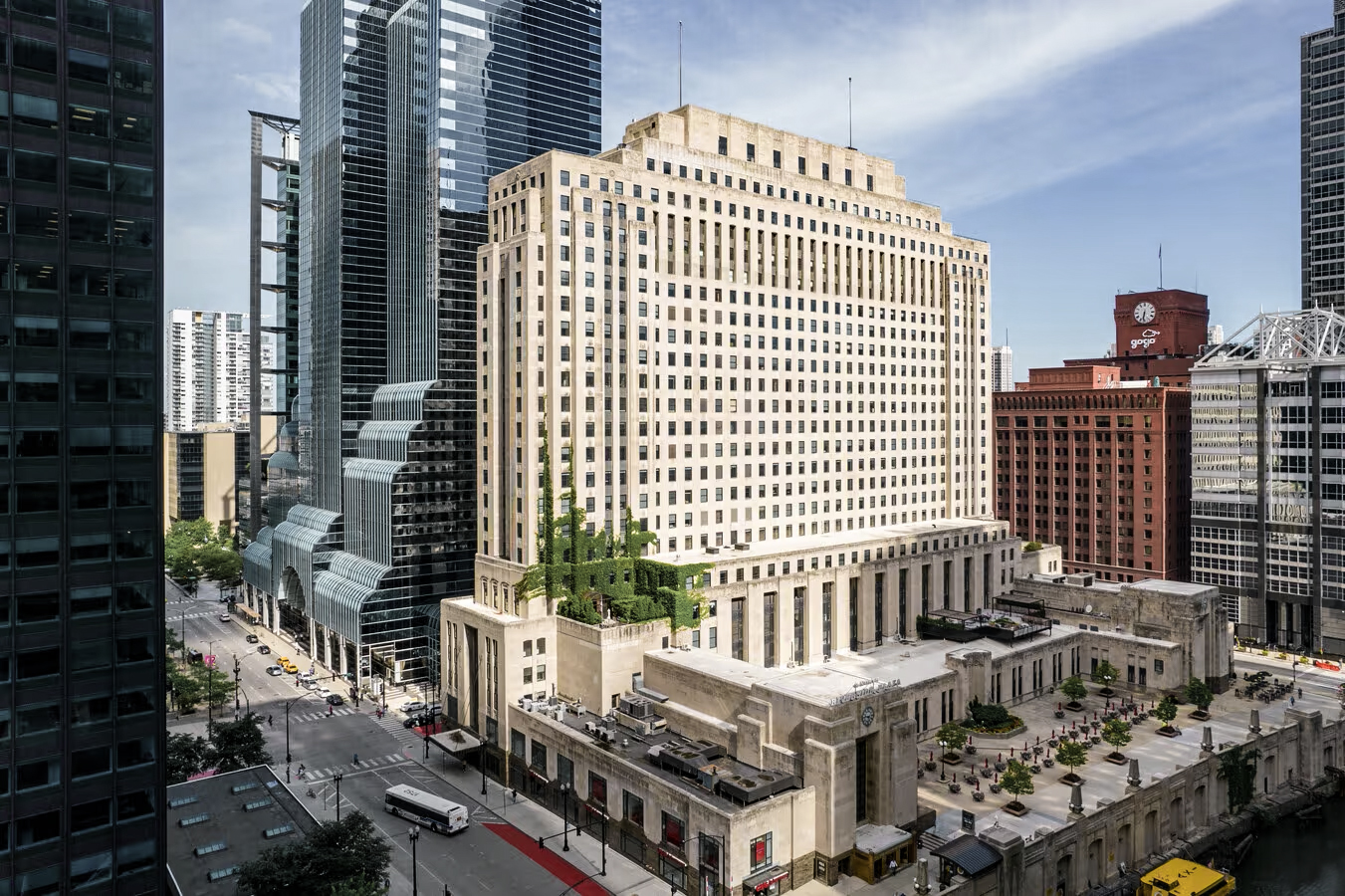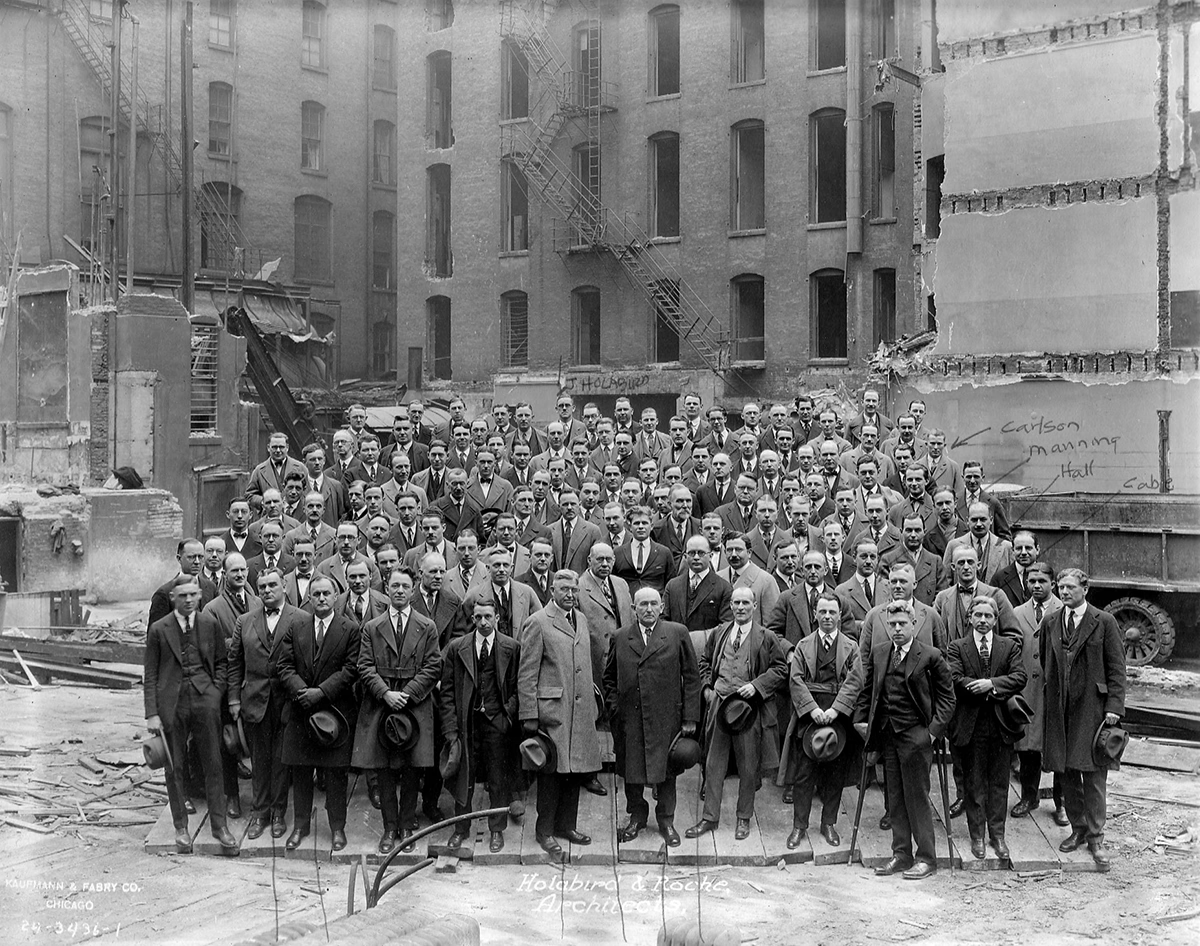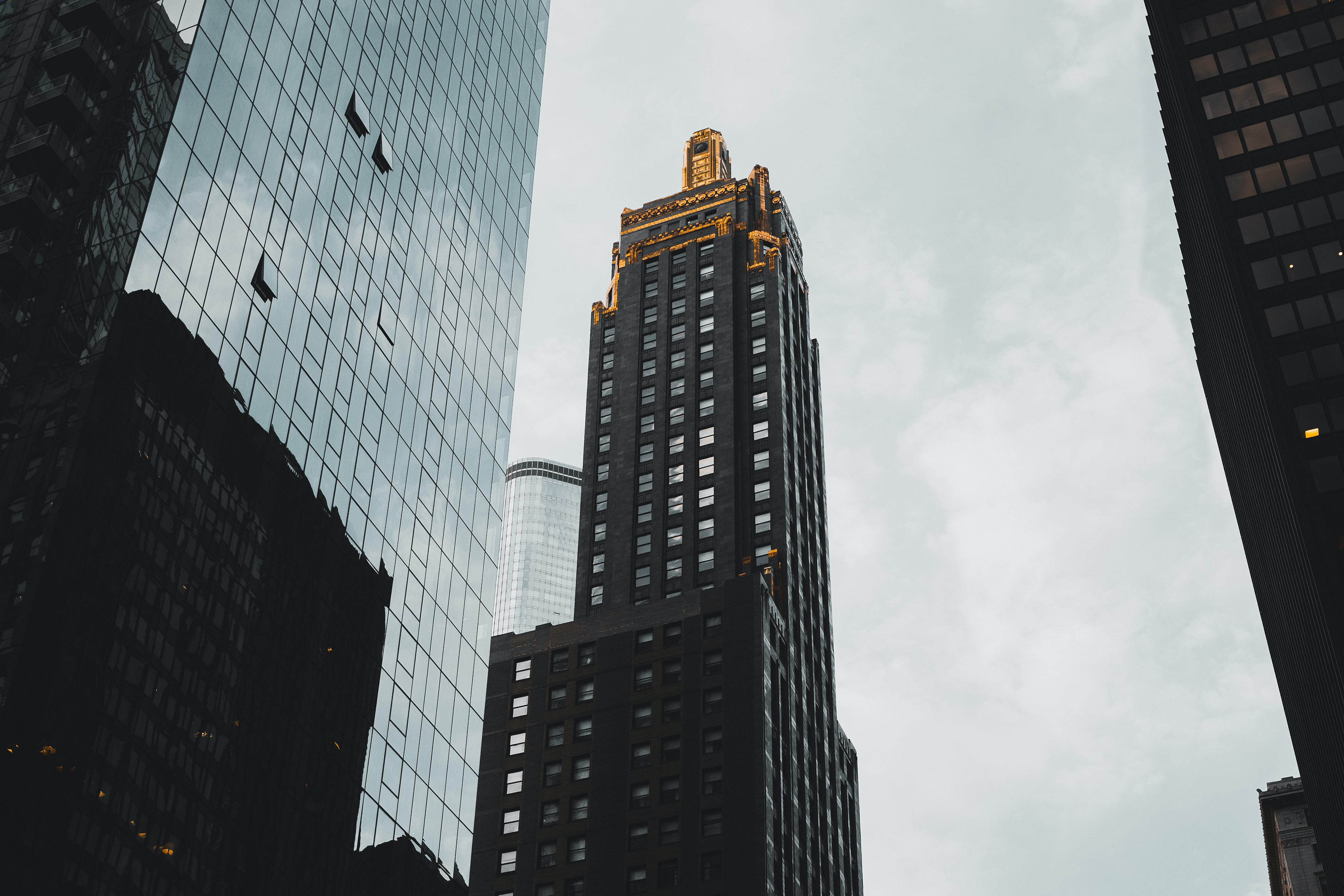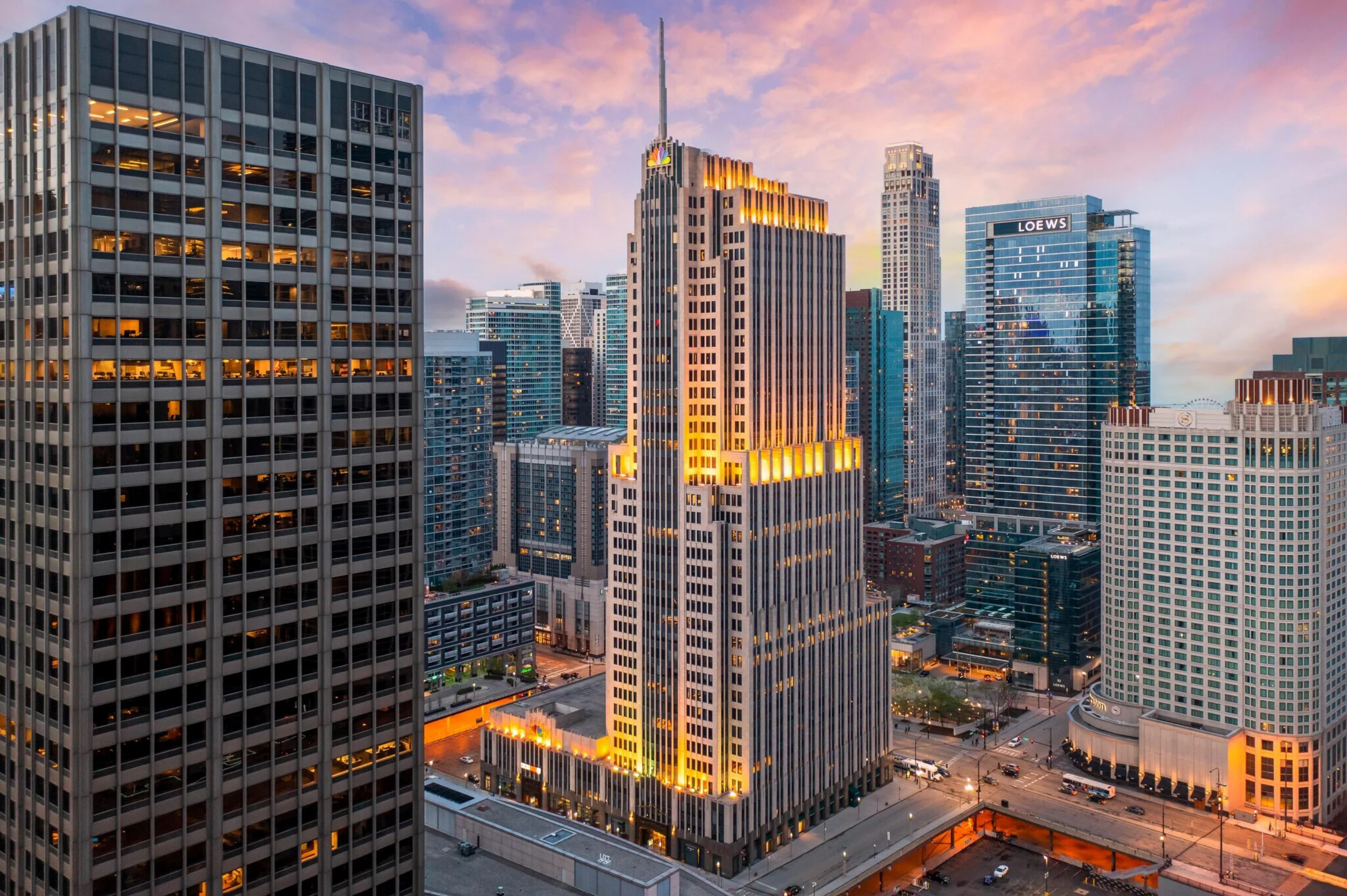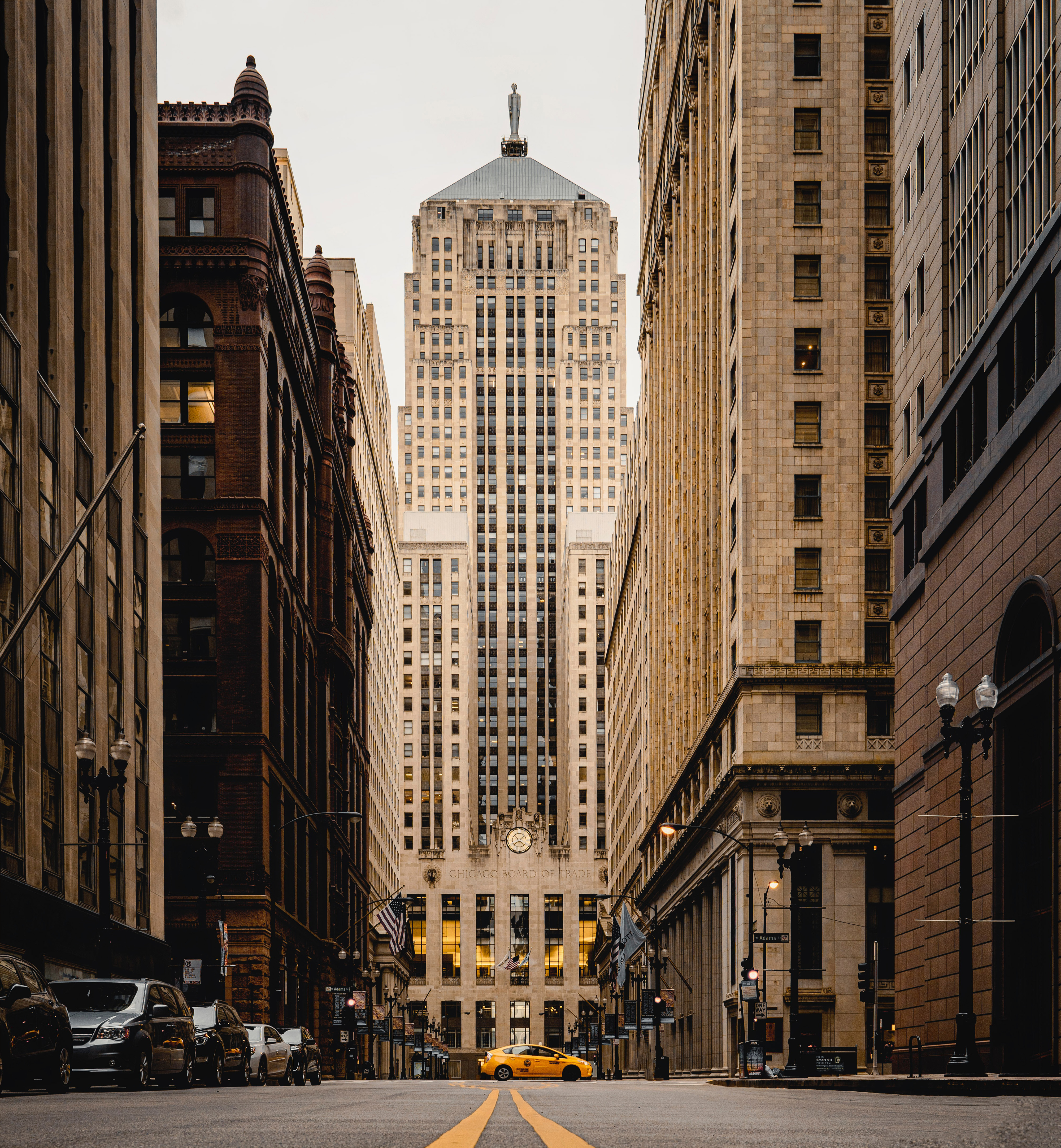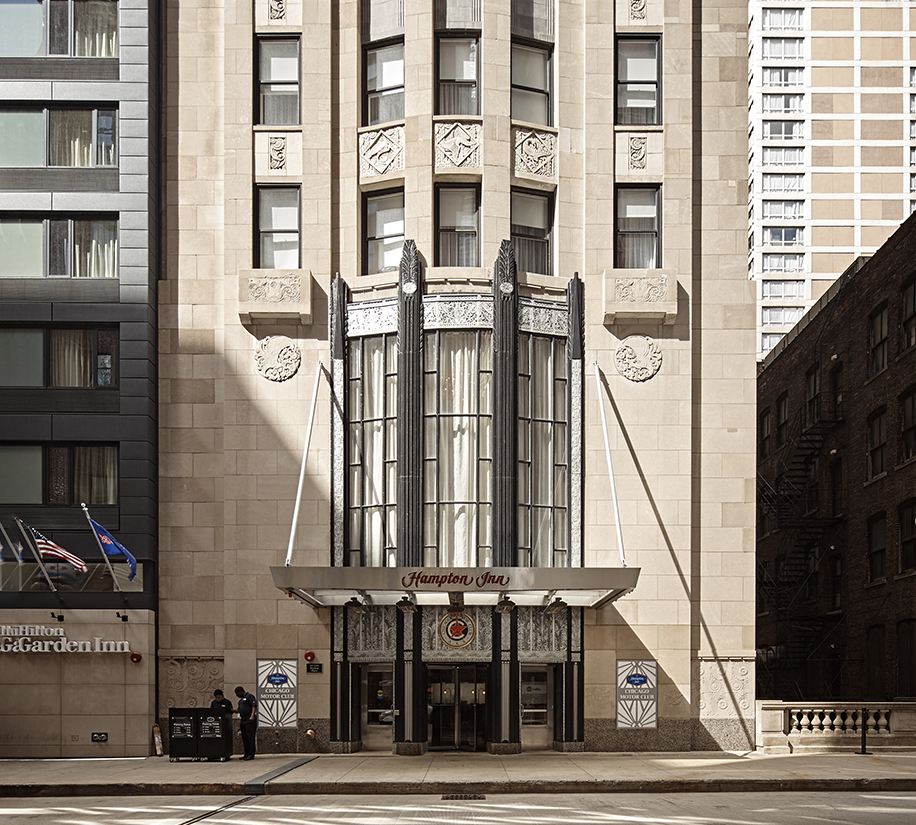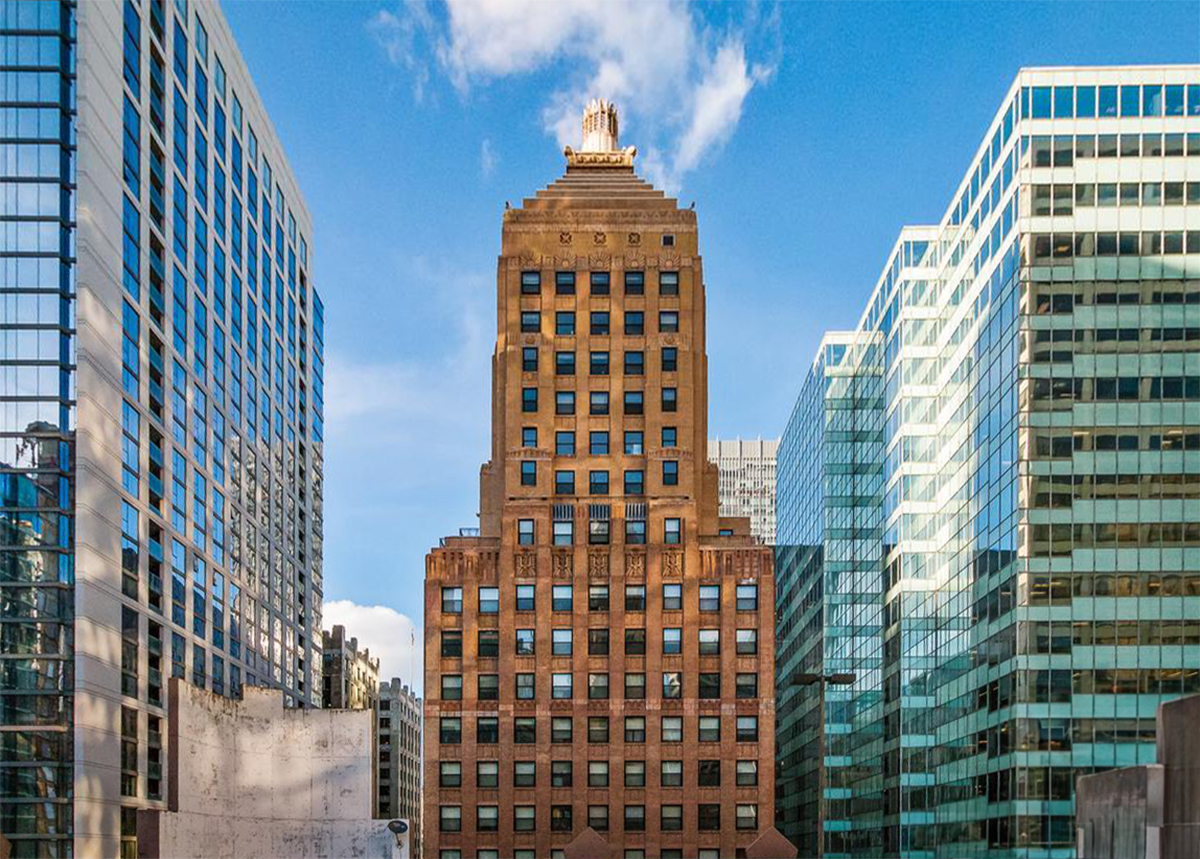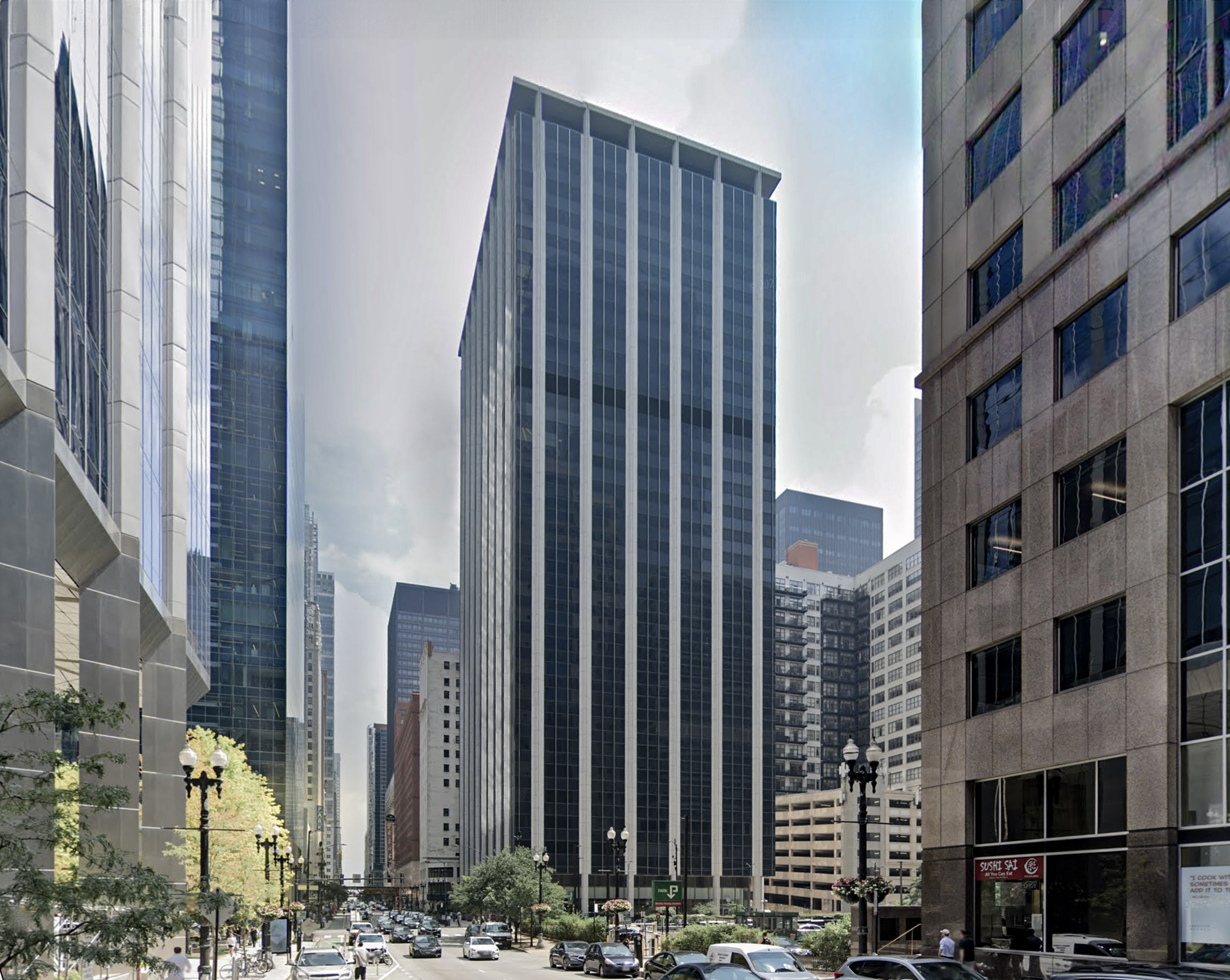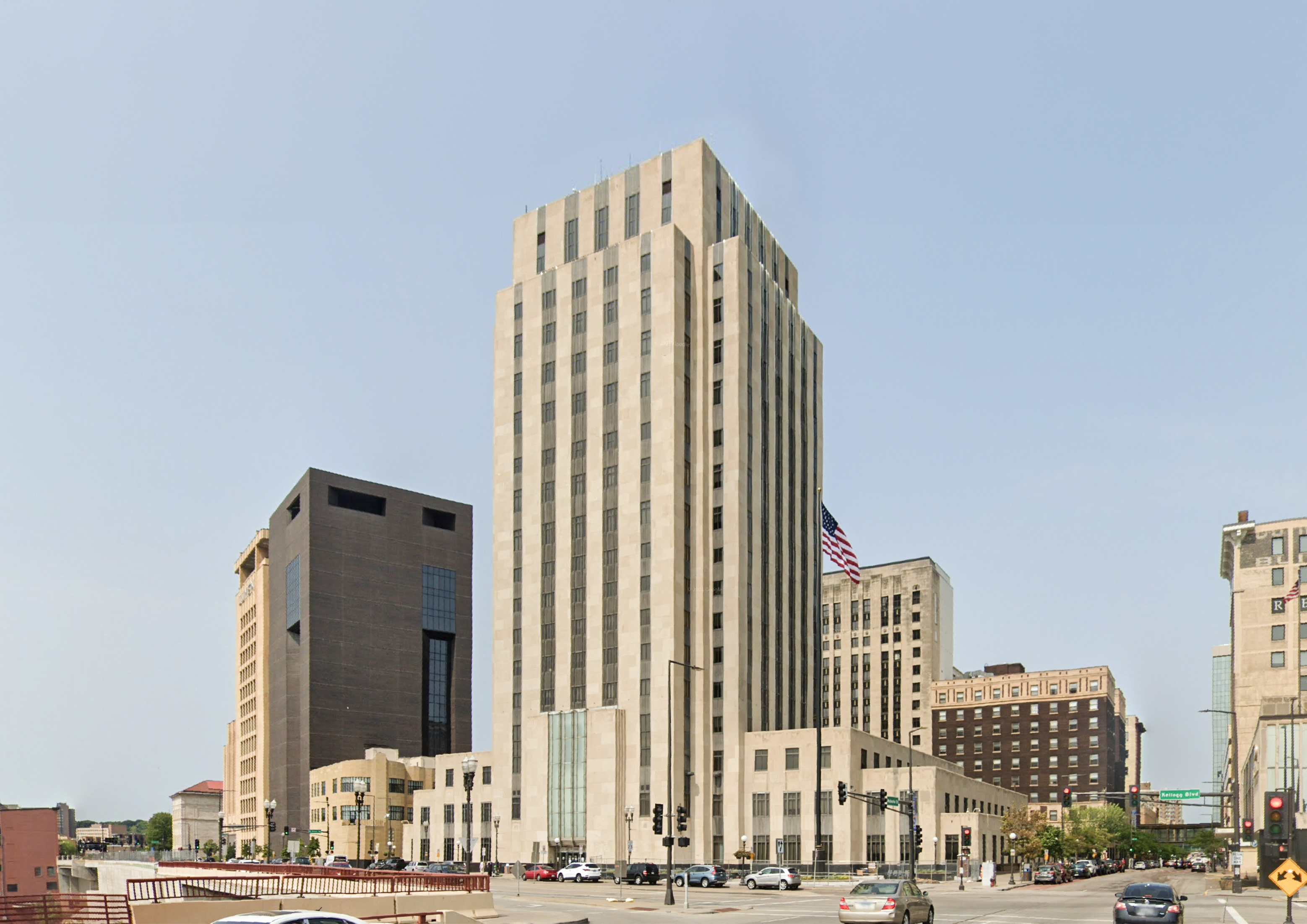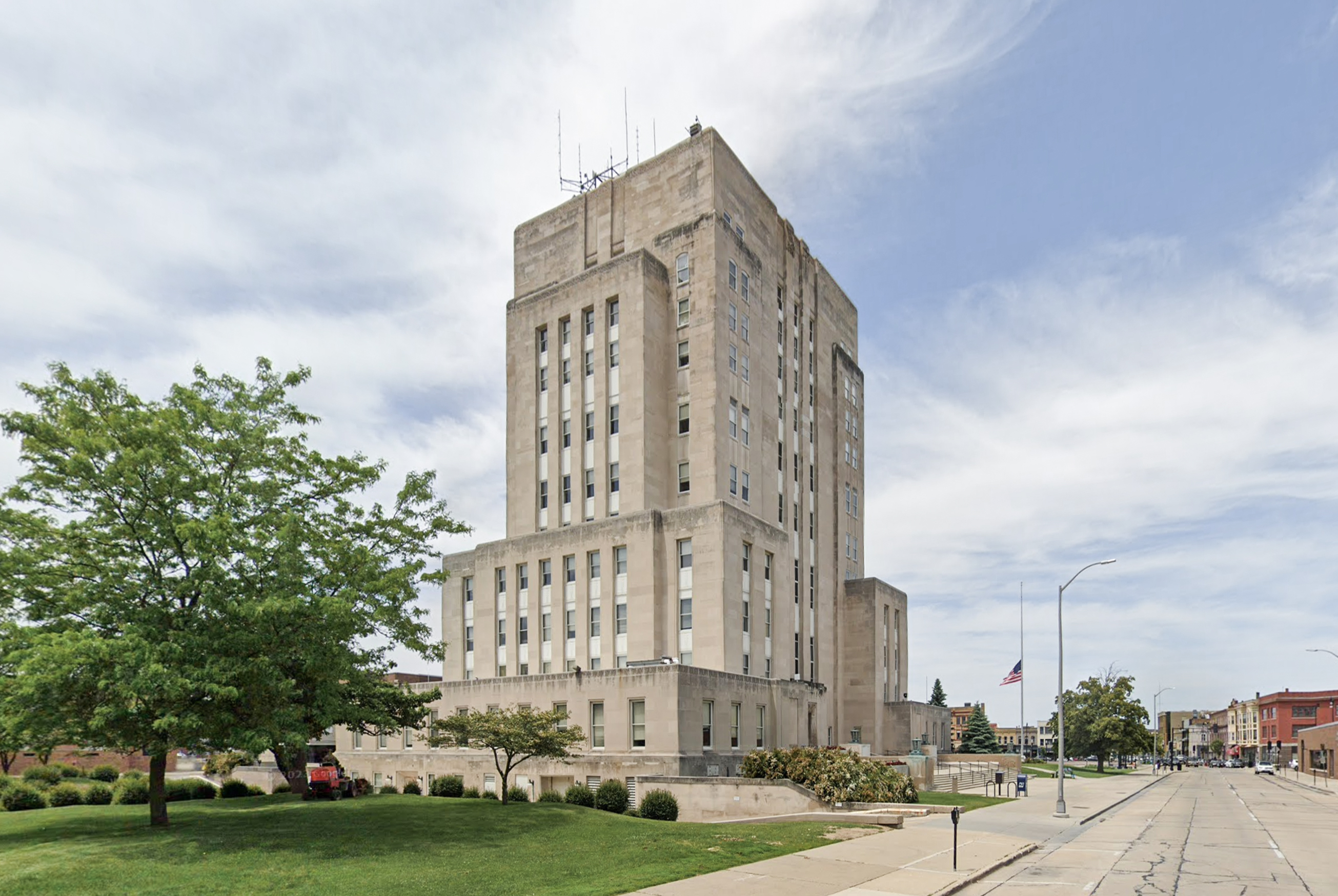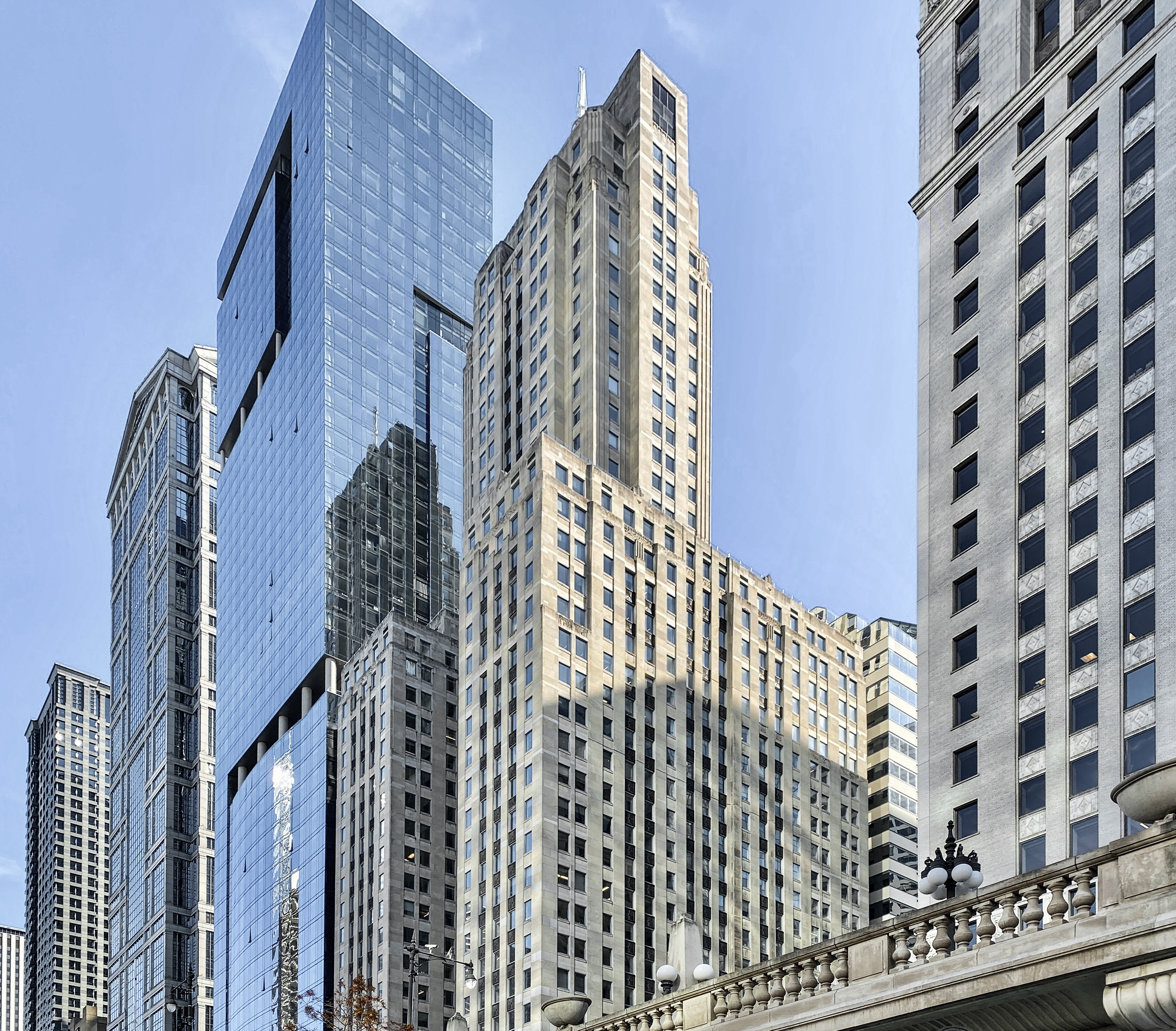The Riverside Plaza Building is an Art-deco skyscraper designed by Holabird & Root, and built between 1928 and 1929 in Chicago, IL.
Riverside Plaza Building is not the only name you might know this building by though. The building is, or has also been known as Chicago Daily News Building.
Its precise street address is 2 N Riverside Plaza, Chicago, IL. You can also find it on the map here.
At the time of its completion in 1929 the Riverside Plaza Building incorporated solutions that were quite advanced at the time, these included a public open-air plaza as part of the design, something which is way more common, and in some cases even mandatory, in modern skyscrapers design. But that was not the only urbanistic trend that this building set, it was also one of the first to ever use the air rights over another lot, in this case over the railroad tracks.
The building has been restored 2 times over the years to ensure its conservation and adaptation to the pass of time. The main restoration works happened in 2009 and 2023.
